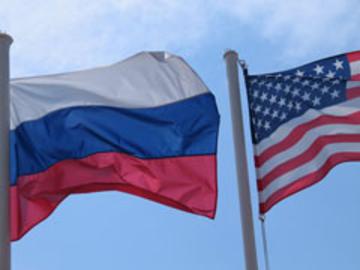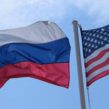
White House-Connected Think Tank Reframes U.S. Policy Toward Georgia (Part Two)
Publication: Eurasia Daily Monitor Volume: 7 Issue: 196
By:

On the humanitarian situation, CAP’s study (Center for American Progress,“A New Approach to the Russia-Georgia Conflict,” October 2010, www.americanprogress.org) recommends US support for easing the movement of people and goods across demarcation lines between the secessionist territories and the rest of Georgia. “Ideally,” this would lead to replacing the Russian “border guards” with joint posts manned by Georgians, South Ossetians, and Abkhaz on those demarcation lines. A follow-up goal would be to start multilateral discussions on reconstruction and restitution of property or the return of people displaced by the 1989-92 and 2008 conflicts in South Ossetia to their homes. A still more distant aim would be to start talks on issues related to the displaced population due to the 1992-93 Abkhazia conflict, an even “thornier” issue.
Georgia and the EU can fully subscribe to those objectives, though not to the indefinite timeframe for their implementation. Russia is blocking international access to the two territories, restricting EUMM’s presence to the inner-Georgian side of the demarcation lines, in breach of the armistice agreement, which had authorized international access. Moscow, Sukhumi and Tskhinvali jointly insist that any discussion of international access must be conducted with the Sukhumi and Tskhinvali authorities, implying international recognition. They also add this condition to their earlier conditions for discussing a hypothetical return of forcibly displaced people to their homes in the two territories. They would undoubtedly introduce the same conditionality for discussing any shared control of the inner-Georgian demarcation lines as well. This is their pre-condition to starting negotiations on any problem, not to resolving it. They have evicted the United Nations and the OSCE from Abkhazia and South Ossetia, respectively, and barred the EUMM, when these organizations declined to meet that pre-condition.
CAP’s study does not suggest ways to deal with this post-2008 impasse. It asserts that holding Russia to the terms of the armistice would be as futile, on the issue of international access, as on the issue of troop withdrawal: “pushing Russia to comply with a ceasefire treaty that it considers null and void has little chance of achieving results.” Instead, it proposes for the US to reframe the discussion with Russia and develop an “incremental action plan,” with small steps over time, toward the eventual implementation of the armistice terms.
Whether they add up to an action plan or fall short of one, CAP proposed those incremental steps without reference to Georgian policy documents, while overlooking the potential for synergies with EU reconstruction and humanitarian assistance initiatives. Georgia’s “State Strategy on Occupied Territories: Engagement Through Cooperation” (www.gov.smr.ge/smr), adopted in January 2010 and endorsed by the European Union (www.consilium.europa.eu, January 27), includes synergies with the EU for reconstruction and humanitarian programs in those territories, as well as political outreach. On the security front, the EU called on Russia to allow EUMM access to Abkhazia and South Ossetia. However, CAP’s study suggests that some organization other than the EU might fit the bill.
Georgia identifies the main goal of Russia’s war and territorial occupation as a way “to disrupt the realization of Georgia’s Euro-Atlantic choice and to compel Georgia by force to return to Russia’s orbit.” This goal, along with militarization of the occupied territories, “increases the risk of provocations and the possibility of new military aggression,” according to Georgia’s Threat Assessment Document, a regular triennial document adopted on September 2, 2010 (EDM, October 25). Tbilisi shares the CAP study’s concern to avert a possible resumption of hostilities. However, CAP seems to trace that risk mainly to irrational or accidental factors, rather than Russian objectives. US policy would become ineffective and possibly irrelevant without recognizing that main Russian goal, and in the absence of measures to secure Georgia’s Euro-Atlantic orientation from a forcible reversal.
The United States holds some leverage to pursue more ambitious goals than those recommended in CAP’s study. For example, Russia should be required like any other country to respect the World Trade Organization’s (WTO) rules and criteria for admission. This would involve lifting the politically-motivated embargo on Georgian goods, and cooperating toward an acceptable solution for the Abkhaz and South Ossetian sectors of the Russia-Georgia border. CAP’s study suggests incremental steps toward joint posts only for the inner-Georgian demarcation lines, which separate the two secessionist territories from the rest of Georgia. The study omits the WTO-relevant issues in Georgia, apparently on the assumption that these are not US policy issues. The administration, however, is publicly offering Moscow a free pass into the WTO in the context of the “reset” policy (Izvestyia, October 21; Itar-Tass, October 22).
By seizing Abkhazia and South Ossetia and by “recognizing” them, Russia has forcibly shifted the Russia-Georgia customs border, from the internationally recognized state border into the internationally recognized Georgian territory. In that process Moscow has also created two “black holes”. WTO member countries have the right to block the entry of new members for failure to observe the organization’s rules. Georgia has submitted proposals to administer the Abkhaz and South Ossetian sectors of the Georgia-Russia customs border together with Russian customs services, without prejudicing the integrity of Georgia’s internationally recognized territory. Practically this would involve Georgian customs officials to be stationed there, in some arrangement of cooperation with Russia. The Georgian government has taken the position that it merely seeks to uphold the WTO’s rules by asking Russia to observe them (Civil Georgia, October 8, 13, 15, 20). Admitting Russia into the WTO, despite those problems, might tacitly vindicate the change of Georgia’s international borders by force and imposition of embargos as a political instrument.
Russia’s heavy militarization of Abkhazia and South Ossetia compounds its breaches of the Conventional Forces in Europe (CFE) treaty. With US-led efforts now underway to revitalize that treaty, Washington can not possibly separate this issue from its policies toward Russia and toward Georgia, respectively. Yet CAP’s study does not connect these issues and makes no reference to CFE treaty obligations. It seems to accept that Russian armored forces would stay in Abkhazia and South Ossetia to “deter” Georgia. It also recommends for the US to seek “a voluntary freeze on the buildup of Russian military forces in these territories,” rather than reductions toward compliance with the CFE treaty. While the US is putting the “host country consent” principle at the basis of its position in the CFE negotiations, the CAP study omits this issue altogether from the Russia-Georgia context and its own recommendations for US policy. Such a disjunction, if accepted, would only weaken the US hand, both in the CFE negotiations and in its own policies in Georgia and the South Caucasus.




